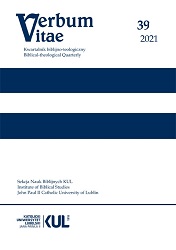Dlaczego Mojżesz, Homer i Platon nie pisali wprost? Strategia interpretacji tekstów kanonicznych u Filona, Maksyma z Tyru i Numeniusza z Apamei
Why Did Not Moses, Homer and Plato Write Clearly? The Strategy for Interpreting the Canonical Texts Employed by Philo, Maximus of Tyre, and Numenius of Apamea
Author(s): Tomasz BednarekSubject(s): Theology and Religion
Published by: Katolicki Uniwersytet Lubelski Jana Pawła II - Wydział Teologii
Keywords: Philo of Alexandria; Maximus of Tyre; Numenius of Apamea; Moses; Homer; Plato; allegorical interpretation
Summary/Abstract: Allegorical interpretation was a hermeneutical tool often used in the writings of Medioplatonist thinkers. Originally developed in discussions of the legacy of Homer, allegoresis was used also by interpreters of the Bible and philosophical writings. The allegorists, recognizing figurative expressions in the texts they interpreted, were aware that those texts, when read literally, were obscure and sometimes even false. The aim of this paper is to analyze the strategies used to defend figurative expressions (mainly anthropomorphisms and allegories), as employed in the works of selected Medioplatonic thinkers: Philo of Alexandria (Quod Deus immutabilis sit, De somniis and De sacrificiis Abeli et Caini); Maximus of Tyre (Oration IV, XVII and XXVI); and Numenius of Apamea (Fragment 23 and 24). A historical-philosophical analysis of particular works, including interpretations of the writings of Moses, Homer and Plato, demonstrates that the defense of writings considered canonical was an important part of the interpretation carried out by the Medioplatonists. Using the comparative method, we also show that the arguments of the Medioplatonic writers contained certain interpretive features common to all of them, as well as others specific to each individually. The shared views included a skeptical approach to the intellectual and philosophical powers of the average person and, thus, a belief in the pedagogical value of figurative language and the necessity of its use in communication.
Journal: Verbum Vitae
- Issue Year: 39/2021
- Issue No: 3
- Page Range: 959-977
- Page Count: 18
- Language: Polish

